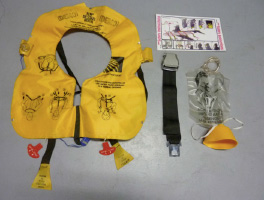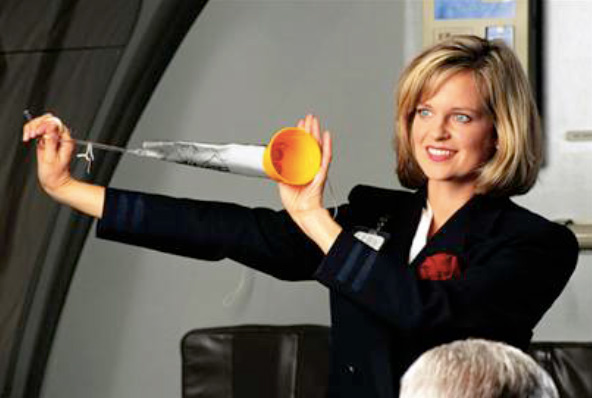You Have the Power to Save Your Life

Boeing 777 has strong safety record, experts say
July 13, 2013
EAA Young Eagles
August 14, 2013In the wake of Asiana Flight 214’s crash landing at the San Francisco International Airport (SFO) on July 6, 2013, there’s no better time to write about travel safety. A tragedy like this shines a spotlight on passenger safety and responsibility. When it comes to air travel safety, passengers must do what they can to prepare themselves for emergency situations, and be equipped with the knowledge to take action. Passengers have the power to save themselves.
As I have stated many times, flight safety isn’t just the pilot’s or the flight attendant’s job—everyone on board must be engaged and work as a team during a crisis. As I found as a pilots’ union accident investigator during an NTSB investigation of a fatal crash 20 years ago, and as an investigator found was the case on Flight 1549, only 12 of our 150 passengers had read the safety briefing card and only 25 had paid attention to the safety briefing prior to our flight that ended with an emergency landing in the Hudson. But even if more of the passengers had paid attention to the safety demonstration, they would not have learned there were life vests installed on this aircraft, because US Airways’ FAA-approved procedures only required the flight attendants to demonstrate the life vests if this had been a planned overwater flight. The life vests are typically found under the seats but aren’t easy to spot. Most passengers didn’t even realize there were life vests available to them until we supplied them with some later on. This is why it is so important to pay attention to the safety demonstration, to read the safety briefing card and to pay close attention to your surroundings, before the flight takes off.
 With summer travel in full swing, I’ve compiled a short list of important safety tips to follow below. These simple guidelines may help ensure a safer flight for you and your fellow travelers:
With summer travel in full swing, I’ve compiled a short list of important safety tips to follow below. These simple guidelines may help ensure a safer flight for you and your fellow travelers:
PAY ATTENTION to the cabin crew’s safety demonstration at the beginning of your flight.
READ the safety briefing card in the seat pocket in front of you.
IDENTIFY the nearest emergency exits and understand how to open them in case of an emergency. There are instructions on the door as well as in the safety briefing card. Count the number of rows ahead or behind you to the nearest exit. You may have to find it in a darkened or smoke-filled cabin.
DETERMINE whether there is a life vest available for you or only a seat cushion for flotation.
STAY seated with your seatbelt securely fastened unless absolutely necessary to do otherwise.
Keeping your seat belt fastened at all times even if the seatbelt sign is turned off can prevent serious injuries to yourself and others as turbulence can occur unexpectedly.
PREVENT potential in-flight injuries by adhering to the airline’s carry-on restrictions, and using an approved child safety seat or device.
TURN OFF your personal electronic devices (PED).
LEAVE your luggage and personal items behind in the event of an evacuation. Holding up the line for a few seconds to grab your stuff might cost someone behind you their life.
By being prepared, you may be able to save your own life and the lives of others during a crisis. While air travel is still the safest form of transportation, Flights 214 and 1549 demonstrated the importance of passenger awareness of safety procedures, which I believe played an important role in improving the outcomes. For those of you who think there’s no reason to look at the safety briefing card or listen to the safety demonstration because you think we’re all going to perish anyway – it’s simply not true; even major crashes are survivable.
Here are some additional resources:
FAA – PASSENGER SAFETY
http://www.faa.gov/passengers/
AOPA PASSENGER SAFETY BRIEFING
http://www.aopa.org/Education/Safety-Videos/Passenger-Safety-Briefing.aspx
UNITED AIRLINES SAFTEY DEMONSTRATION
https://www.youtube.com/watch?v=tp-us6R8-xU
AIRLINE GURU
http://www.airlineguru.com.au/about-us
CONSUMER TRAVELER
http://www.consumertraveler.com/columns/56353/


